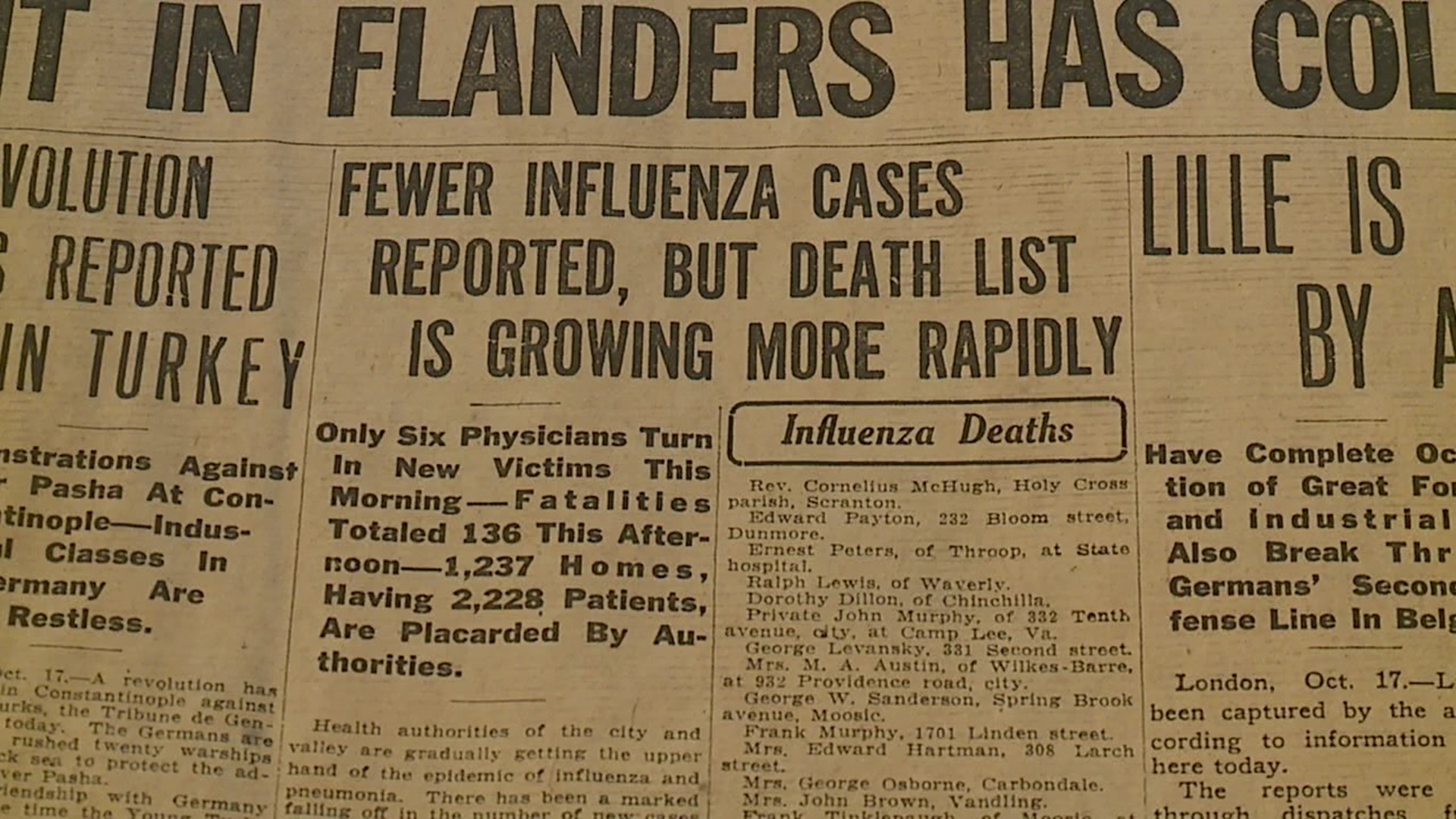SCRANTON, Pa. — "Quarantine it is hoped will check deadly flu."
"Vick's Vaporub oversold due to present epidemic."
If it weren't for the yellowed, crinkled pages, and the date at the top, those two headlines could easily be mistaken for headlines from the Scranton Times today.
But these pages, stored by the Lackawanna Historical Society, are from the newspaper back in the fall of 1918, at the peak of the Spanish flu pandemic.
"The schools were closed, the bars were closed, the theaters were closed. There were no public gatherings," said Sarah Piccini, Assistant Director at the Lackawanna Historical Society. "The emergency hospitals were being opened at the armory in a tent outside the Mid Valley Hospital in Peckville. Borough halls were establishing hospitals in the hallway, basically."
Unlike today though, news of the disease didn't dominate the headlines. The war effort did.
"It was kind of running parallel as the war was ending. It looked promising for the Allies. So those are the really big headlines - the Germans have been defeated, this town has been recaptured," said Piccini.
World War I contributed to the spread of the disease, mainly through troop mobilization.
A liberty loan parade that drew thousands into Scranton was held at the end of September, and almost immediately after, the flu took hold of the city. The bulk of the death toll is from October alone.
"The first cases were reported in Bellevue, in West Side, and then it spread across the city, across the county after that," said Piccini.
The war is also the reason behind how the Spanish flu got its name. The Central and Allied powers censored news of the outbreak, in order to keep morale up. But Spain remained neutral during the war, so it had no reason to do that. All of the uncensored reports coming out of Spain made it seem as though the country was particularly hard-hit.
But when it comes to how the Spanish flu impacted daily life here, the historical society doesn't have a lot of documentation or physical evidence.
Only the newspaper clippings survived.
"It gives a pretty good official history, but it kind of loses the 'what was it really like to live in Scranton at the time?'" explains Piccini.
So the Historical Society wants to change that for the current pandemic, so future generations can have an idea of what life is like now. The society is asking people to go to its website and answer a few questions, such as:
"We're asking people to record the differences in their daily life. What did you do today? What would you have if you weren't in a coronavirus quarantine? How did you first hear about it? Did your opinion of it change as it went on?"
If you'd like to help record history as it happens, fill out the survey here.

